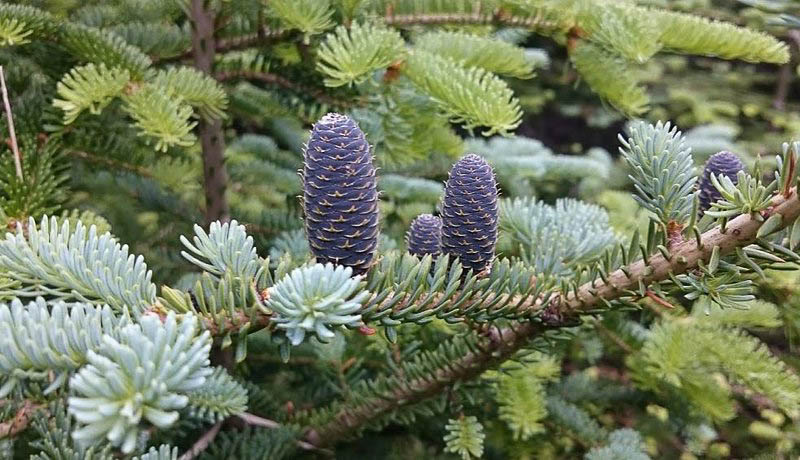Balsam Fir: The Fragrant Jewel of Northern Forests
The Balsam Fir, a conifer belonging to the Pinaceae family, is a tree steeped in natural beauty and practical use. It’s native to North America, flourishing predominantly in the northeastern United States and Canada.
Description and Characteristics: Balsam Firs are known for their symmetrical, spire-like shape, with a conical crown and smooth, gray bark that becomes more rugged and furrowed with age. The tree typically grows to a height of 50-70 feet (15-21 m) and has a narrow diameter, with a lifespan that can extend over 150-200 years. The needles are flat, around 1 to 1.5 inches long, dark green above, and silver-white below, creating a dense and lush appearance.
Habitat: It thrives in cool, moist climates, often found in mountainous regions and wetlands. It’s a dominant species in the boreal forest and a common sight in North American coniferous woods.
Uses and Significance: Balsam Firs are widely used as Christmas trees due to their pleasant fragrance and pyramid-like shape. The wood is light and soft, making it suitable for pulp and light construction. Traditionally, the resin (Canada balsam) has been used in mounting microscope specimens and as a glue.
Ecological Role: The tree plays a critical role in its ecosystem, providing shelter and food for wildlife. Birds often nest in its branches, and its seeds are a food source for small mammals. Balsam Fir forests contribute to carbon sequestration and are vital in regulating climate and air quality.
Fun Facts: Balsam Firs are known for their distinctive fragrance reminiscent of the winter holidays. They are slow growers, with some only reaching full height after several decades.

